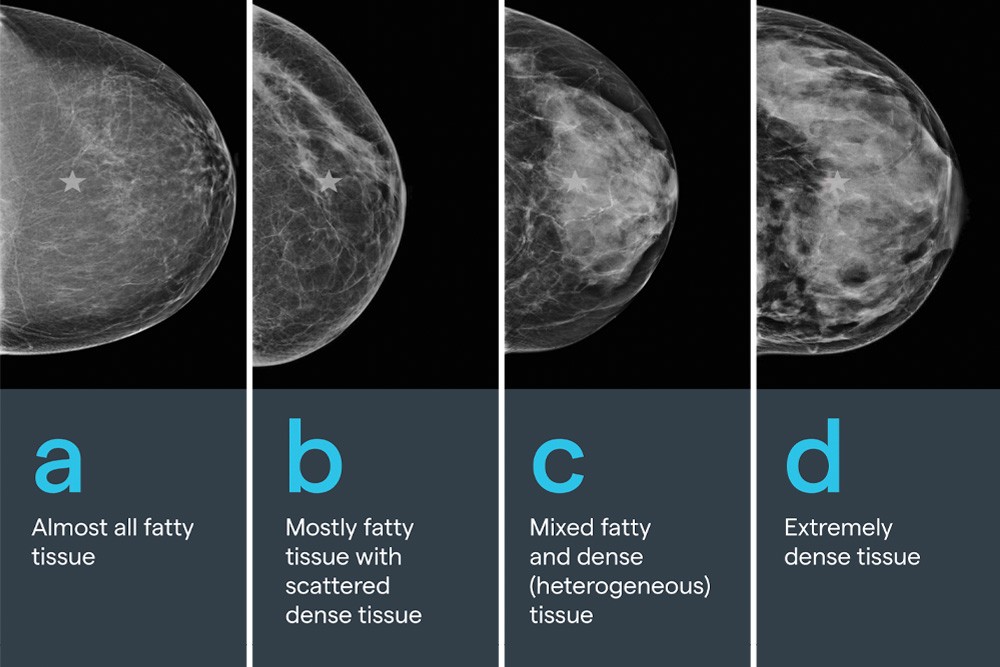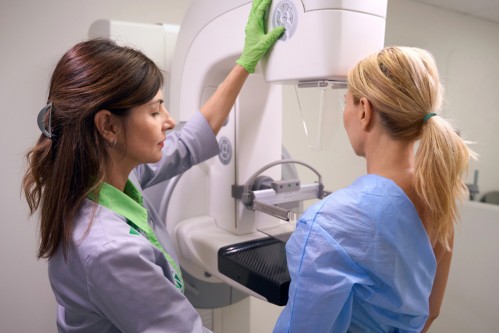
Do You Know Your Breast Density?
Dense tissue can camouflage cancer on the mammogram and increase your risk of developing cancer in your lifetime.
It is important to know and understand your breast composition. Breasts are composed of dense (fibrograndular) and fatty (adipose) tissue. Your mammogram report classifies your breast tissue as dense or non-dense. These two categories can be further broken down into smaller categories labeled A, B, C, and D, where A and B indicate non-dense breasts and C and D indicate dense breasts.
- Having dense breast tissue is common. Nearly half of US women over the age of 40 have dense breasts.
- Dense tissue can hide cancer as both appear white on a mammogram.
- Breast composition is determined by a mammogram or MRI, not by how the breasts look or feel.
- Breast composition can change over time due to age, genetics, and other factors.
- Women with breast composition c or d, or specific risk factors, may require additional screening after a mammogram.
You need to monitor your breast health over time and participate in regular screenings.

Related Articles

Women's Health
Have You Completed a Breast Cancer Risk Assessment?
OakLeaf Clinics has invested in software to identify and manage patients at high risk of developing...

Women's Health
AI Helps Us Detect Breast Cancer
We're using the latest AI technology to improve breast cancer detection during your mammogram. This...

Women's Health
Now Using AI to Deliver the Highest-Quality Mammograms
OakLeaf Clinics is now using Volpara Analytics, an AI-based software platform that helps our...

Obstetrics and Gynecology
Medtronic Bladder Control Therapy
Evidence suggests that breakdowns in the bladder-brain communication pathway may be a root cause of...
